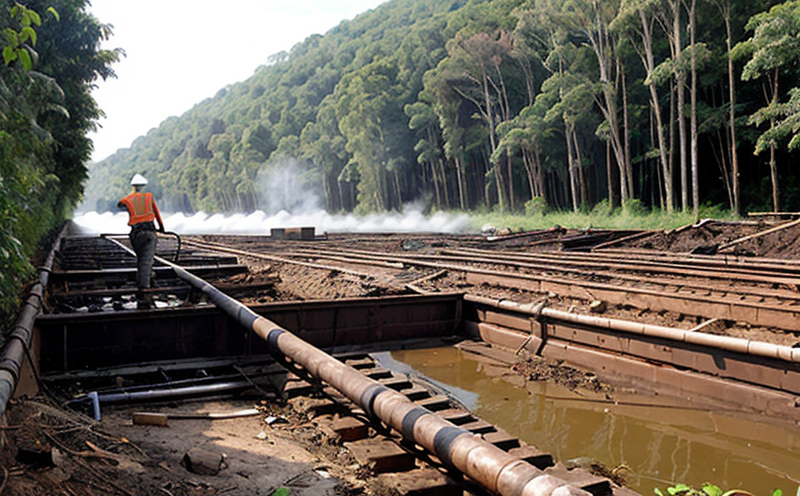EN 16260 Environmental Risk Monitoring for Industrial Sites Test
The EN 16260 standard provides a comprehensive framework for the identification, assessment, and monitoring of environmental risks at industrial sites. This test is essential for ensuring compliance with environmental regulations, protecting ecosystems, and safeguarding public health. Compliance with this standard is particularly critical in sectors such as manufacturing, energy production, and chemical processing where industrial activities can have significant environmental impacts.
The primary goal of the EN 16260 test is to identify potential risks to air quality, water sources, soil contamination, and biodiversity that may arise from industrial processes. The standard outlines a structured approach for conducting regular audits and assessments at these sites to ensure continuous monitoring and mitigation measures are in place.
The methodology involves the following key components:
- Site Assessment: Initial evaluation of potential environmental risks based on historical data, current operations, and stakeholder input.
- Risk Identification: Identification of specific risk factors using a variety of techniques such as air sampling, water testing, soil analysis, and biological monitoring.
- Monitoring Plan Development: Creation of an actionable plan to monitor identified risks over time. This includes defining parameters for monitoring, frequency of checks, and methods for reporting findings.
- Data Analysis: Continuous analysis of collected data using statistical tools to identify trends and potential changes in risk levels.
The EN 16260 test is particularly important for industrial sites that are subject to stringent environmental regulations. By adhering to this standard, organizations can demonstrate their commitment to sustainability and responsible environmental stewardship.
Scope and Methodology
The scope of the EN 16260 test is broad but focuses on key areas where industrial activities might pose risks. The standard covers air quality monitoring, water source protection, soil contamination assessment, and biodiversity impact evaluation.
In terms of methodology:
- Sampling: Samples are collected from various points around the site including exhaust stacks, discharge points, and surrounding natural environments.
- Instrumentation: High-precision instruments such as gas analyzers, pH meters, and spectrophotometers are used to ensure accurate measurements.
- Data Logging: Continuous data logging is carried out using automated systems to capture real-time changes in environmental conditions.
The acceptance criteria for EN 16260 testing include compliance with relevant national and international standards such as ISO, ASTM, and local regulatory requirements. The test results are reported back to the site management along with recommendations for any necessary corrective actions.
Customer Impact and Satisfaction
- Enhanced Compliance: Organizations that undergo EN 16260 testing demonstrate their commitment to environmental responsibility, which can enhance their reputation with stakeholders.
- Risk Mitigation: By identifying potential risks early, companies can take proactive measures to mitigate them, reducing the likelihood of costly fines or legal actions.
- Data-Driven Decisions: The continuous monitoring and data analysis provided by this test allow for informed decision-making regarding environmental policies and practices.
- Innovation Opportunities: Regular testing can uncover areas where improvements in technology or operational processes can be made, leading to greater efficiency and sustainability.
The overall satisfaction of customers who use the EN 16260 test is high due to its comprehensive approach to environmental risk management. It provides clear insights into potential risks and actionable recommendations for improvement.
Use Cases and Application Examples
The application of EN 16260 testing is diverse, covering a wide range of industrial sectors:
- Manufacturing Plants: Identifies risks related to emissions from production lines.
- Energy Facilities: Assesses potential impacts on local water sources and surrounding wildlife.
- Chemical Processing Units: Evaluates the safety of waste disposal practices and their effect on soil quality.
In each case, the test results are used to develop targeted mitigation strategies that align with regulatory requirements while also improving operational efficiency. For example, a manufacturing plant might reduce its emissions by implementing new filtration technologies recommended after EN 16260 testing reveals high levels of particulate matter in exhaust gases.





